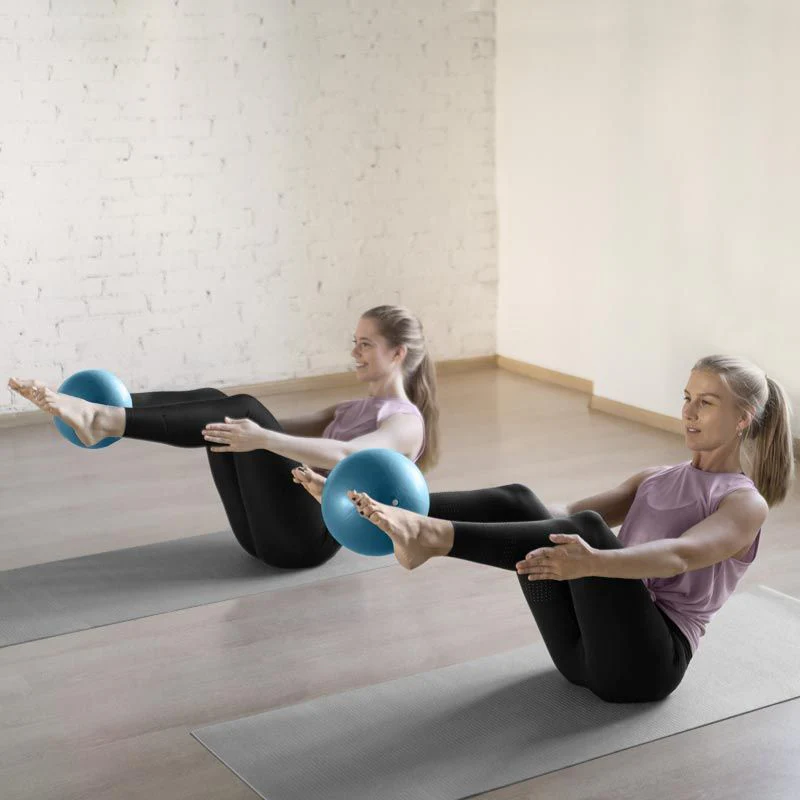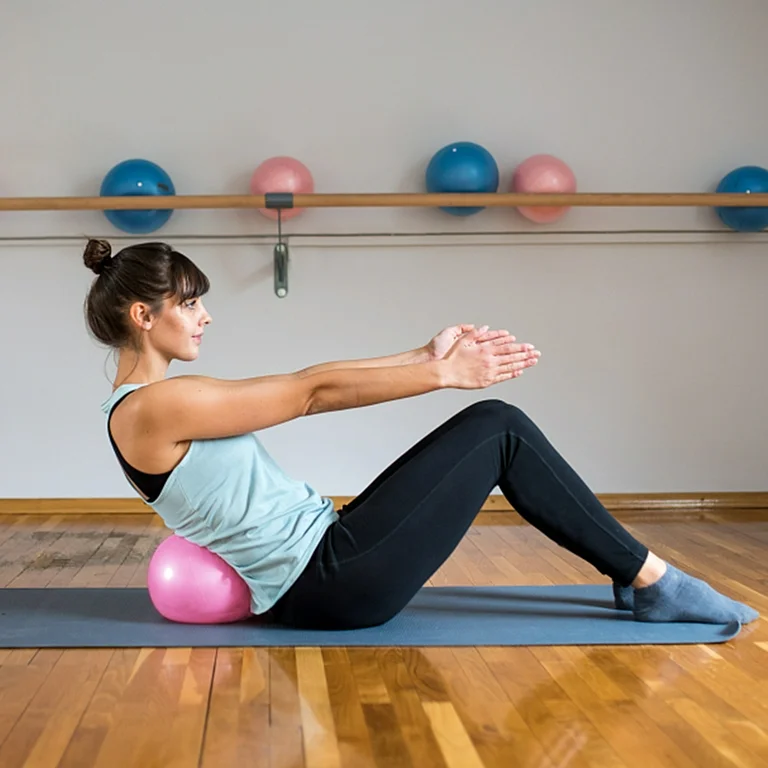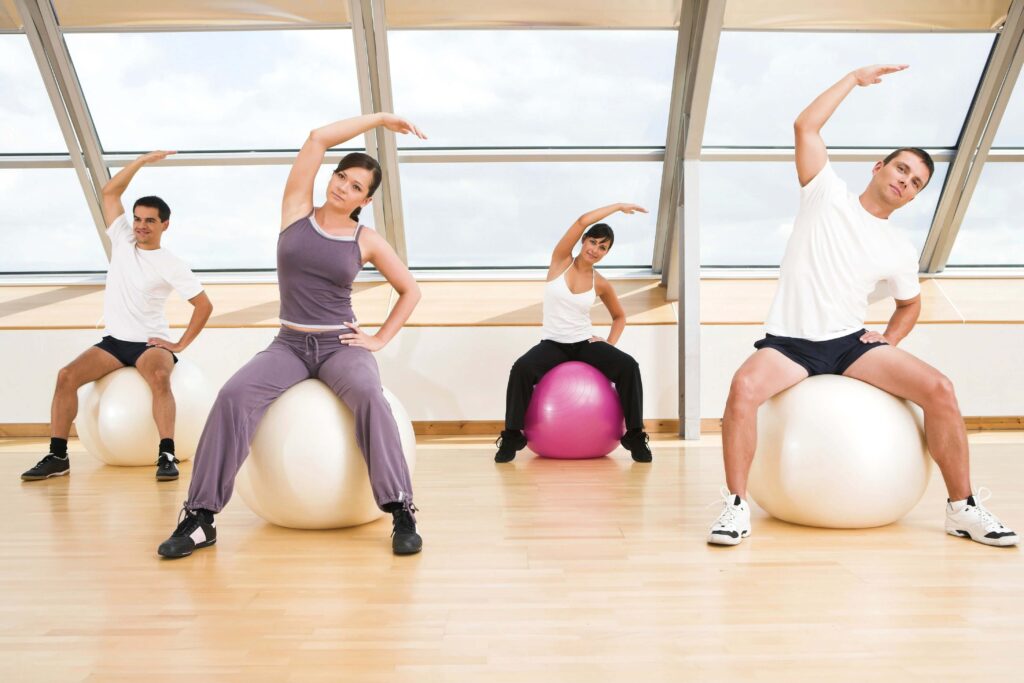The soft Pilates ball, often referred to as a stability ball or Swiss ball, has become an essential tool in many fitness routines. Its versatility allows for a range of exercises that can enhance core strength, improve balance, and increase flexibility. However, like any piece of fitness equipment, it is crucial to understand how to use it safely to avoid injury and maximise its benefits. This article provides essential safety tips for incorporating a soft Pilates ball into your workout regimen.
Understanding the Basics of the Soft Pilates Ball
Before diving into safety tips, it is important to understand what a soft Pilates ball is and how it functions. Typically made from durable, anti-burst materials, these balls are designed to support various exercises while providing an unstable surface that challenges the body’s balance and coordination. The unique design of the soft Pilates ball allows for a range of movements, from core strengthening to flexibility training, making it a versatile tool in both home and studio settings. Its lightweight nature also means it can be easily transported, allowing you to maintain your fitness regime wherever you go.
Choosing the Right Size
One of the most critical factors in ensuring safety while using a soft Pilates ball is selecting the correct size. Pilates balls come in various diameters, usually ranging from 45 cm to 75 cm. The right size depends on your height; a general guideline is:
- Under 5’0″ (152 cm): 45 cm ball
- 5’0″ to 5’5″ (152 cm to 165 cm): 55 cm ball
- 5’6″ to 6’0″ (168 cm to 183 cm): 65 cm ball
- Over 6’0″ (183 cm): 75 cm ball
Using a ball that is too large or too small can lead to poor posture and increase the risk of injury. When seated on the ball, your knees should be at a right angle, with your feet flat on the floor. Additionally, the size of the ball can affect the intensity of your workout; a larger ball may require more effort to stabilise, while a smaller ball can facilitate more precise movements. Therefore, it is beneficial to experiment with different sizes to find the one that best suits your exercise style and fitness goals.
Ensuring Proper Inflation
Another essential aspect of safety is ensuring that the ball is properly inflated. An under-inflated ball can be unstable, while an over-inflated one can burst easily. It is advisable to follow the manufacturer’s guidelines for inflation and regularly check the ball’s firmness before each workout. A well-inflated ball should feel firm yet allow for slight give when pressure is applied. Moreover, the inflation process itself can be a learning experience; using a pump specifically designed for fitness balls can help achieve the right level of firmness without overexerting yourself. It’s also worth noting that temperature can affect the ball’s inflation—colder environments may cause the air inside to contract, leading to a firmer feel, while warmer conditions can expand the air, making the ball feel softer. Therefore, always check the ball’s inflation level in the environment where you plan to use it to ensure optimal performance.
Warm-Up and Preparation
As with any workout, warming up is vital to prepare the body for exercise and reduce the risk of injury. When incorporating a soft Pilates ball into your routine, specific warm-up exercises can help activate the muscles that will be engaged during your workout.
Dynamic Stretching
Dynamic stretching involves moving parts of your body through their full range of motion. Incorporating dynamic stretches targeting the core, legs, and back can be particularly beneficial. Examples include torso twists, leg swings, and gentle lunges. These movements not only warm up the muscles but also help improve flexibility and coordination. Engaging in a series of dynamic stretches can also increase your heart rate, preparing your cardiovascular system for the demands of your Pilates session. Moreover, focusing on controlled movements during these stretches can enhance your body awareness, which is crucial when using a Pilates ball.
Familiarising with the Ball
Before starting your workout, spend a few minutes getting accustomed to the ball. Sit on it, roll it gently, and practice balancing. This familiarisation will help build confidence and ensure that you are comfortable with the ball’s movement during exercises. Additionally, consider incorporating some gentle movements while seated on the ball, such as small bounces or shifting your weight from side to side. These actions can activate your stabilising muscles, which play a pivotal role in maintaining balance and control throughout your workout. By taking the time to connect with the ball, you not only enhance your physical readiness but also cultivate a sense of mindfulness that can enrich your overall exercise experience.
Maintaining Proper Form
Using a soft Pilates ball effectively requires maintaining proper form throughout each exercise. Poor posture can lead to strain and injury, negating the benefits of the workout. It is essential to cultivate an awareness of your body’s positioning, as even minor misalignments can significantly affect your performance and overall safety.
Engaging the Core
One of the primary benefits of using a Pilates ball is its ability to engage the core muscles. When performing exercises, focus on pulling your belly button towards your spine to activate these muscles. This engagement not only stabilises the body but also protects the lower back during movements. Additionally, incorporating deep breathing techniques can enhance core activation; exhaling during exertion helps to further engage these stabilising muscles, leading to a more effective workout.
Alignment and Posture
Always ensure that your body is aligned correctly. Keep your shoulders relaxed and avoid hunching over. When performing exercises, your knees should be aligned with your toes, and your back should remain straight. If you find yourself straining to maintain form, consider reducing the intensity of the exercise or taking a break. Furthermore, it can be beneficial to periodically check in with your alignment throughout your routine. Using mirrors or filming yourself can provide valuable feedback, allowing you to make necessary adjustments in real time. Remember, maintaining proper form not only enhances the effectiveness of your workout but also fosters a greater sense of body awareness, which is crucial for long-term fitness success.
Choosing Appropriate Exercises
Not all exercises are suitable for every individual, and some may pose a higher risk of injury than others. Selecting exercises that match your fitness level and experience with the Pilates ball is crucial for safety.
Start with Basic Exercises
For beginners, it is advisable to start with basic exercises that focus on stability and balance. Simple movements such as seated ball bounces, wall squats with the ball, and gentle pelvic tilts can help build confidence and strength. As proficiency increases, more complex exercises can be introduced.
Avoiding High-Risk Movements
Some exercises, such as those requiring extreme balance or advanced flexibility, may not be suitable for everyone. Avoid movements that feel uncomfortable or strain your body. If unsure, consult a fitness professional who can provide guidance tailored to your abilities.

Creating a Safe Workout Environment
The environment in which you exercise can significantly impact safety. Ensuring a safe space to use the soft Pilates ball can prevent accidents and injuries. Click here to learn about enhance flexibility and comfort with a Pilates Soft Ball.
Clear the Area
Before starting your workout, ensure that the area around you is clear of obstacles. Remove any furniture, equipment, or other items that could pose a tripping hazard. A spacious, uncluttered environment allows for freedom of movement and reduces the risk of falls.
Use a Non-Slip Surface
Performing exercises on a non-slip surface is essential for maintaining stability. If exercising on a hard floor, consider using a mat underneath the ball to prevent it from rolling away. Additionally, wearing appropriate footwear can enhance grip and stability during workouts.
Listening to Your Body
One of the most important aspects of safety during any workout is listening to your body. Understanding your limits and recognising signs of discomfort can prevent injury and ensure a positive experience.
Recognising Pain vs. Discomfort
It is normal to feel some discomfort when challenging your body, but pain is a warning sign that something may be wrong. If you experience sharp or persistent pain while using the Pilates ball, stop the exercise immediately. Ignoring pain can lead to serious injuries that may require medical attention.
Rest and Recovery
Incorporating rest days into your routine is essential for muscle recovery and overall well-being. Overworking your body can lead to fatigue and increase the risk of injury. Ensure you allow adequate time for recovery between workouts, especially when using the Pilates ball for intense exercises.
Incorporating Professional Guidance
For those new to using a soft Pilates ball or looking to enhance their technique, seeking professional guidance can be invaluable. Certified fitness instructors can provide tailored advice, ensuring that exercises are performed safely and effectively.
Joining a Class
Participating in a Pilates or fitness class that incorporates the ball can be an excellent way to learn proper techniques. Instructors can offer modifications based on individual fitness levels and provide immediate feedback on form and alignment.
Utilising Online Resources
For those who prefer to work out at home, numerous online resources are available, including videos and tutorials. Ensure that the content is from reputable sources and that exercises are demonstrated with a focus on safety and proper form.

Conclusion
The soft Pilates ball is a fantastic addition to any workout routine, offering numerous benefits for strength, balance, and flexibility. However, safety should always be a priority when incorporating this tool into your exercises. By following the tips outlined in this article—such as choosing the right size, maintaining proper form, and listening to your body—individuals can enjoy a safe and effective workout experience.
Whether you are a beginner or an experienced fitness enthusiast, taking the time to understand how to use the soft Pilates ball safely will enhance your workouts and contribute to your overall fitness journey. Embrace the challenge, stay safe, and enjoy the many benefits that come with using this versatile piece of equipment.


